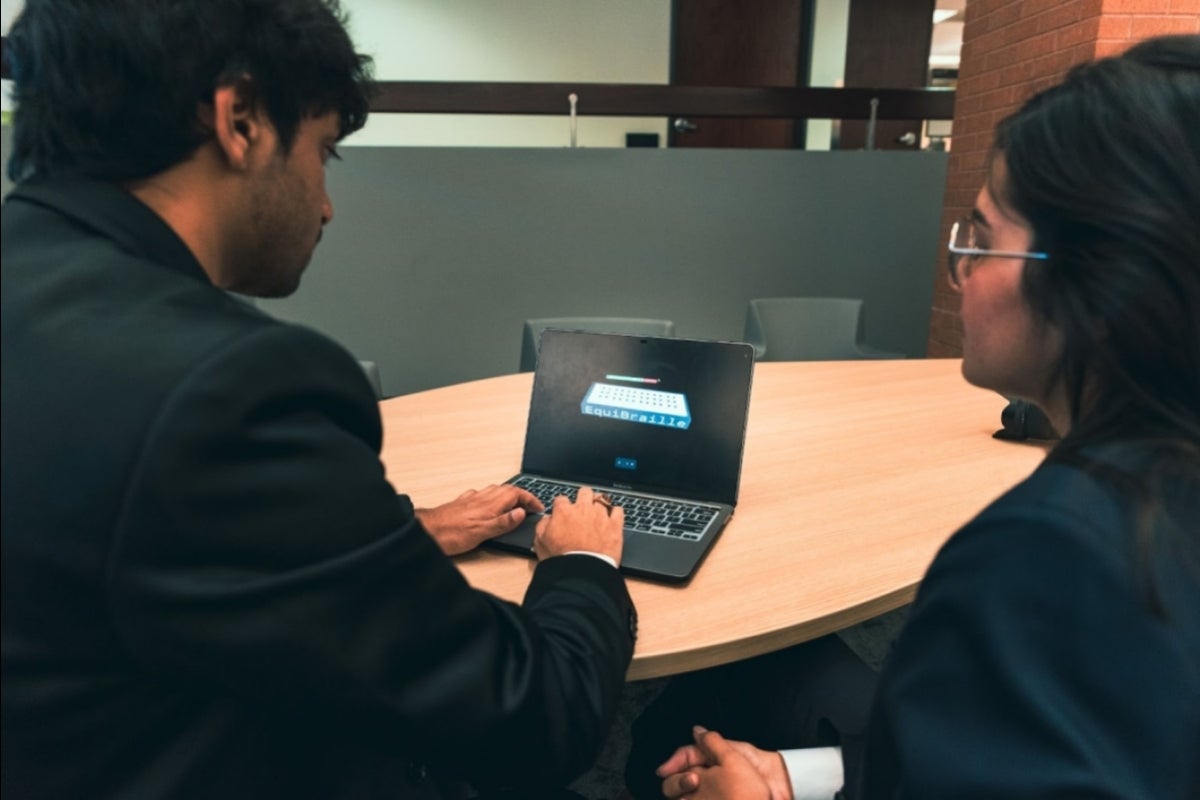Arizon State University computer science senior Krishna Prasad Sheshadri worked with visually impaired students when he was in high school in India.
“I got involved in the processes for visually impaired students, especially those with economically disadvantaged backgrounds who could not afford a lot of technology,” he said. “So we worked to make resources available to them.”
Now, Sheshadri’s passion for providing more accessible learning is driving him, along with his colleagues who also volunteered with visually impaired learners, to find new ways to create more inclusive solutions.
During the start of the spring semester at ASU in February 2022, Sheshadri took part in a student hackathon as part of the launch of the Verizon 5G Innovation Hub at ASU. Hosted by Enterprise Technology’s Learning Futures, students explored new ways to apply Verizon 5G Ultra Wideband and wireless technology to enhance solutions that address education, health care and the environment.
Here, Sheshadri and a team of three other students developed the idea behind EquiBraille, a Braille board that uses artificial intelligence to offer visually impaired students real-time access to written classroom material.
As a finalist project from the event, the EquiBraille team was awarded with an initial $8,000 support to continue, an internship with VentureWell and the Clinton Global Initiative and additional seed funding for the work. Now, EquiBraille is on the way to an expansive impact.
Keval Shah, technical lead for the project and a sophomore majoring in computer science, shared the inspiration behind EquiBraille.
“Something that really stood out for us was that, in the current education system, many visually impaired students need a visualization for what’s happening in the class,” Shah said. “They want a way to read materials on the board during the class, instead of receiving notes a week or two later … which can happen.
“What if we can make something that visually impaired students could use to have a better education and be able to achieve their dreams?”
The developers’ goal? To equip ASU classrooms with new cameras and also expand EquiBraille to other schools and institutions.
EquiBraille is built on an ultra-low-latency connection, which makes internet communication nearly instantaneous. This reduction of “lag” allows in-class cameras to read white- or chalkboards and then transcribe and translate writing using artificial intelligence. This information is then sent, in real time, to a physical Braille board.
The board is flat in its default state, but once the transcription is sent to it, mechanical pieces spring into action, raising and lowering the characters necessary for visually impaired students to read what is written on the whiteboard directly in front of them in Braille.
As part of their summer experience, the team developed a business plan for EquiBraille and conducted interviews with stakeholders, such as disability centers, visually impaired students and the educators who work with them.
EquiBraille’s solution will offer Braille translation in near real time, using the power of 5G networks’ speed and AI. The team, now a trio between Sheshadri, Shah and Ananya Yadav, noted that they plan to utilize classrooms at ASU already outfitted with cameras for their initial trial.
The team will focus on entry-level math and English courses to measure visually impaired students’ performance before and after the introduction of EquiBraille. This information will allow the developers to continue improving the experience.
Top photo by Mike Sanchez/ASU
More Science and technology

Transforming Arizona’s highways for a smoother drive
Imagine you’re driving down a smooth stretch of road. Your tires have firm traction. There are no potholes you need to swerve to avoid. Your suspension feels responsive. You’re relaxed and focused on…

The Sun Devil who revolutionized kitty litter
If you have a cat, there’s a good chance you’re benefiting from the work of an Arizona State University alumna. In honor of Women's History Month, we're sharing her story.A pioneering chemist…

ASU to host 2 new 51 Pegasi b Fellows, cementing leadership in exoplanet research
Arizona State University continues its rapid rise in planetary astronomy, welcoming two new 51 Pegasi b Fellows to its exoplanet research team in fall 2025. The Heising-Simons Foundation awarded the…






